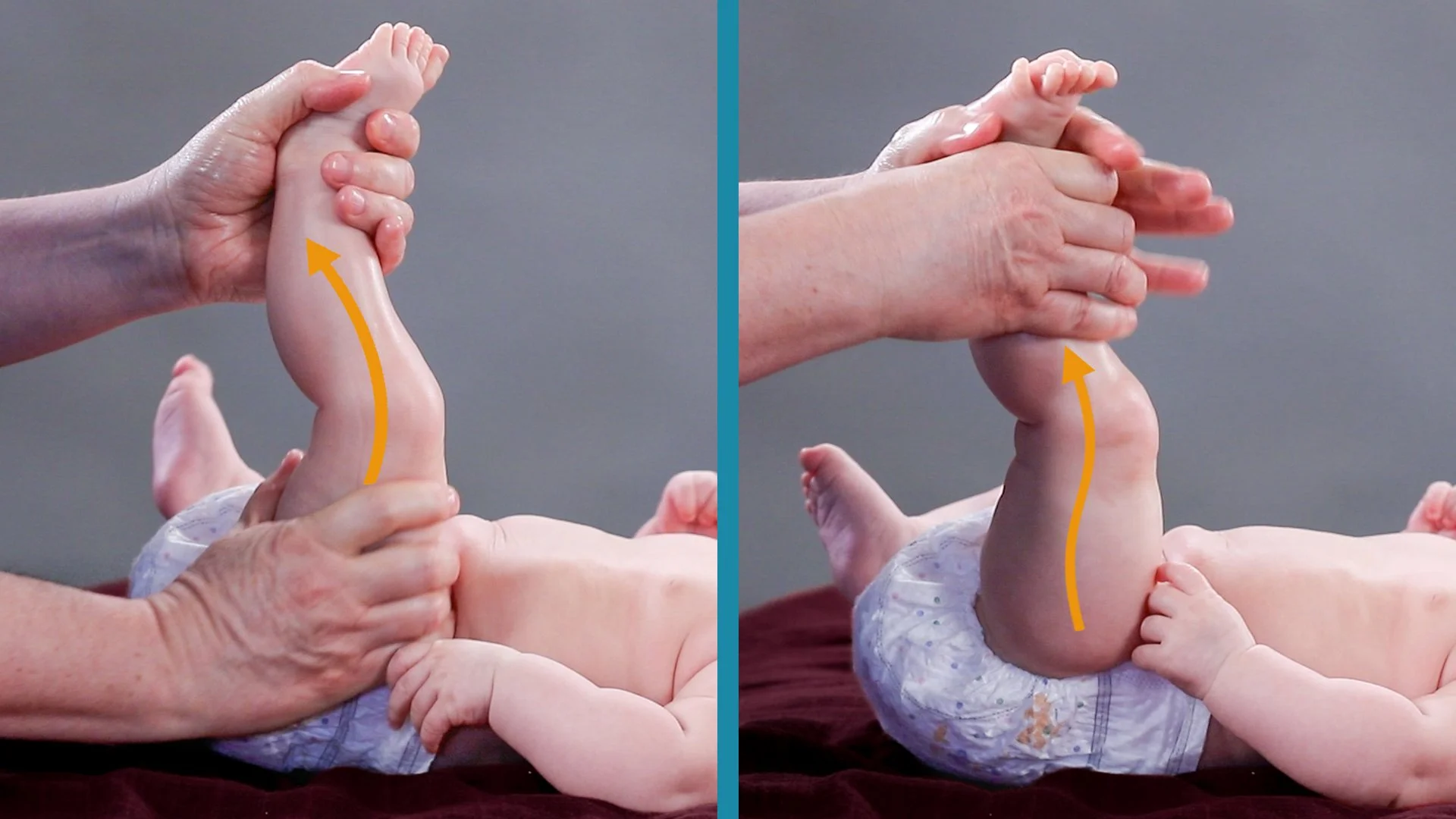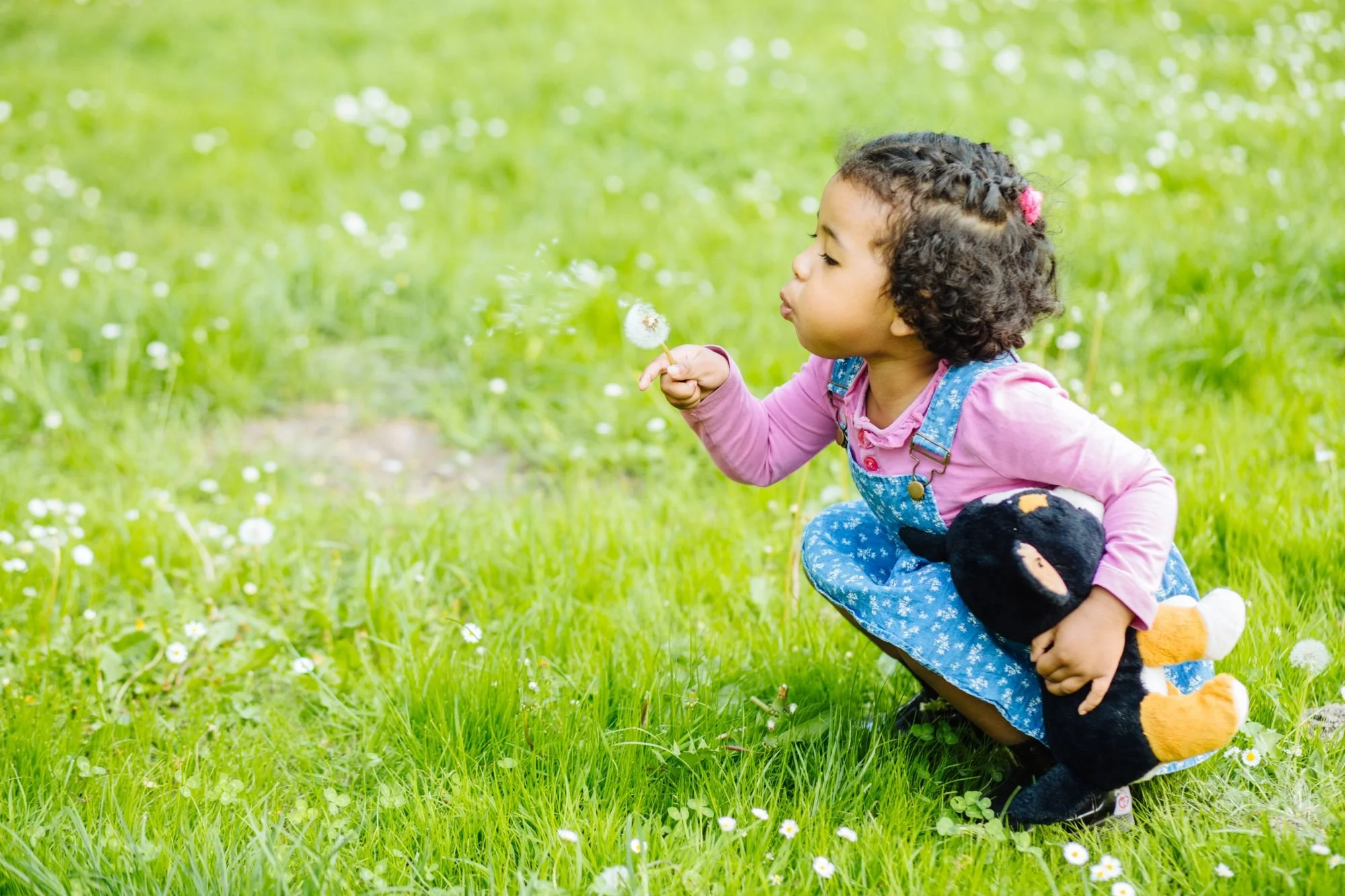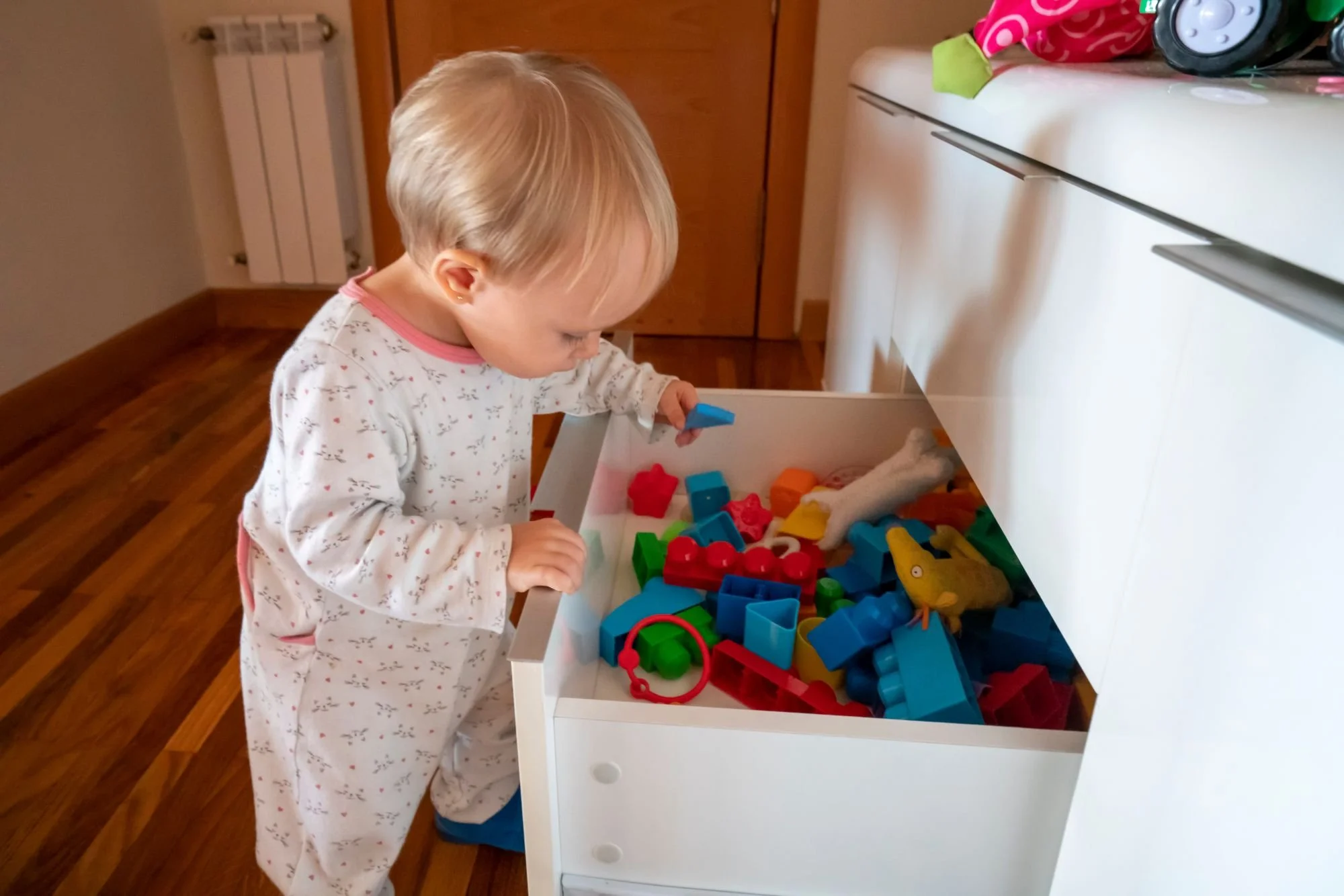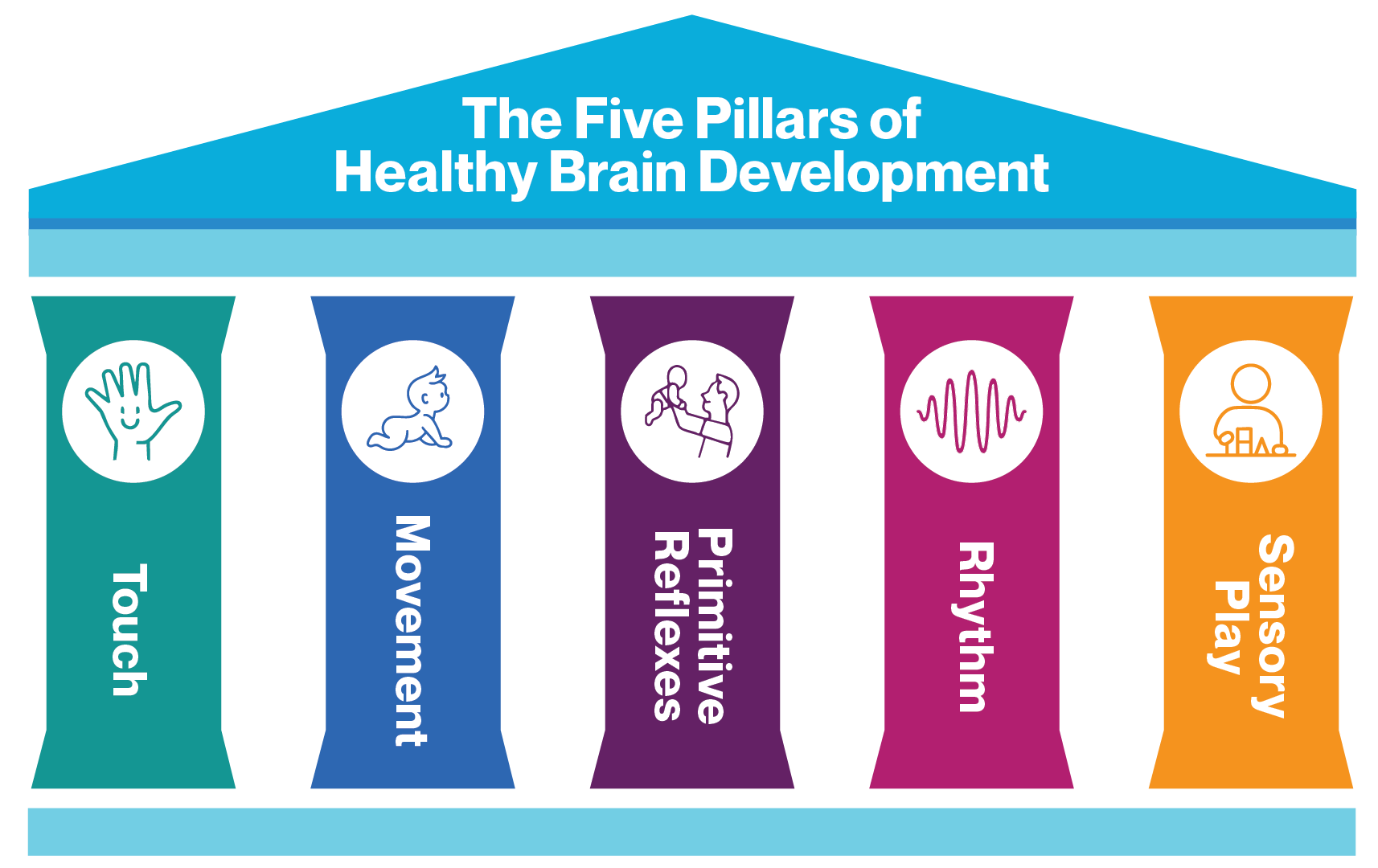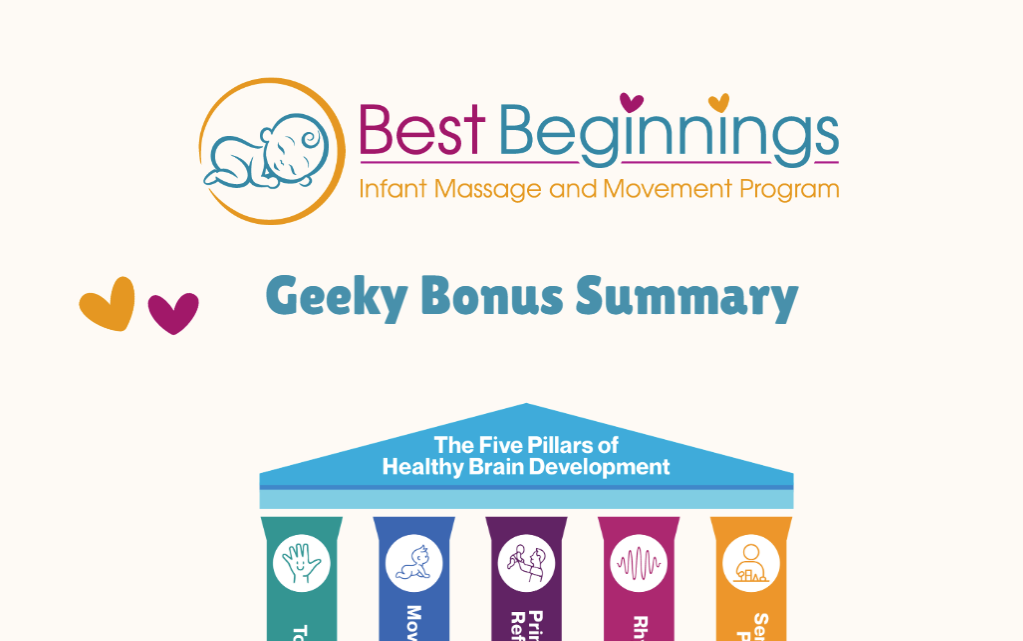
Learn Infant Massage
✽
Easy and fun
✽
Learn Infant Massage ✽ Easy and fun ✽
Infant Massage and Movement Program
Enhance Baby’s Brain Development Through Touch and Play
The Best Beginnings Infant Massage and Movement Program helps parents everywhere nurture their baby’s brain and body through touch and play. Created by Dr. Melanie Beingessner, a pediatric-focused chiropractor and certified infant massage instructor, this online course teaches simple, evidence-based techniques that promote bonding, calmness, and healthy brain development.
Drawing on her experience as a pediatric chiropractor and certified infant massage instructor, Dr. Melanie designed this course to give parents practical, research-based skills to help their babies thrive.
Parents will learn simple ways to strengthen bonding, build confidence, and support their baby’s growth and brain development through touch and play.
Benefits for Baby
Enhanced bonding between you and your baby
Improved sleep
Improved digestion and easier bowel movements
Reduced gassiness and fussiness
Improved weight gain
Benefits for You
Improved bonding
Enhanced confidence
Decreased stress and improved mindfulness
Support for postpartum recovery
A chance to have fun with your baby
The Best Beginnings Program Includes:
A complete infant massage program
Learn infant massage with 40+ videos and printable stroke guides, plus expert tips on how to choose oils, how much pressure to use, creating the right environment, and more.
How Rhythm and Sound calm the brain
Learn about rhythmic touch and movements, and the importance of sound in Baby’s day. Includes many fun ways to stimulate Baby’s hearing and to help them learn.
Movement and Play guides
Discover how movement supports your baby’s brain development and specific play activities that stimulate primitive reflexes. Includes a printable movement play guide and guidance for fun activities you can do at home with Baby.
How to increase Sensory Play in your child’s life
It is important to stimulate all of Baby’s senses and this section provides many tips on easy things you can include in your day. Includes how Baby can become overstimulated and what to avoid doing in the home.
Understanding Primitive Reflexes
Learn what primitive reflexes are, how they integrate, and ways to support your baby’s development. Explore the 9 most common primitive reflexes, their importance, and the behaviours that may appear if they don’t integrate.
How to Create a Sensory-Rich Home Environment
Discover how to organize your home to support your baby’s growth, with tips on setting up play areas, adding sensory and messy play, and encouraging the benefits of free play.
The Five Pillars of Healthy Brain Development
The Best Beginnings program is built around five essential pillars of early child development. Together, they form the foundation for your baby’s healthy brain, body, and emotional growth.
Each pillar highlights an important way that a developing mind is stimulated.
Touch
This is the infant massage part of the program. The power of touch stimulates Baby’s brain and provides many other health benefits for both baby and the person giving the massage.
Movement
Movement is important for baby, and some movements are more important than others. This section shows you how to easily add specific movements to play sessions to stimulate Baby’s brain.
Primitive
Reflexes
Integrating primitive reflexes is essential for brain development. We will discuss what primitive reflexes are, how they integrate, and what happens if they don’t.
Rhythm
Rhythmic touch, movement, sounds, and play stimulate and help to organize baby’s brain. We’ll show you how to incorporate rhythm into Baby’s life.
Sensory
Play
Babies need to touch things, put them in their mouths, and make messes. Growing children need to play with objects of different textures and shapes. This section provides ideas for Baby to explore their world.
Here’s a Sneak Peek to the Program
Infant Massage Stroke - Down The Leg
Bonus Movement Section - Do the Dip
The Program Includes:
Infant massage stroke sheets that include pictures to help beginners remember the strokes
A condensed two-page infant massage stroke sheet for confident parents
A guide to help you remember fun movements to add to play time
A one-page summary of songs you can sing to Baby
A Geeky Bonus Summary of all the ways this program will ultimately help Baby to integrate their primitive reflexes
150+ references
Course Curriculum
✽
Course Curriculum ✽
12 Chapters - 46 Lessons
-
Introduction to the program, how it started, and welcoming the user to the course community.
-
Foundational information to prepare for the course.
-
Covers the importance of touch for infant development and how it supports brain growth.
-
Teaches the fundamental skills and techniques of infant massage.
-
A step-by-step program to learn infant massage with your baby.
-
Explores the role of movement in brain development and fun movements you can do at home with your Baby.
-
Information on primitive reflexes, what they are, how they integrate, and their impact on your baby’s development.
-
Discusses how rhythm and sounds help to both soothe and stimulate Baby’s brain.
-
In this section, we discuss the senses and how you can stimulate them through play. Additionally, there are many helpful tips on how to organize your home to create a sensory-rich environment.
-
Review and summary of the course content and next steps.
-
Extra materials to support further learning and practice.
Our blog

Frequently Asked Questions
-
Massaging your baby at home is often best. Familiar sights, sounds, and smells help them feel safe and relaxed. Because babies are sensitive to new environments, a calm home setting lets them focus on your soothing touch and the bonding experience—without extra stress. That sense of safety keeps their nervous system regulated, making it easier for them to enjoy the massage and get the most benefit.
-
Babies of all ages benefit from infant massage.
The easiest time to start is when your baby can lie comfortably on their back with their arms relaxed and open. Babies usually are ready for infant massage at about 2-3 months of age. You can certainly start infant massage sooner than that, but the massage sessions should be very soft and short, since newborns can tire quickly.
-
Generally, we recommend organic, cold-pressed, unscented fruit and vegetable oils. Organic oils introduce the least amount of chemicals into Baby’s body.
-
Of course!
Once you are comfortable with the massage strokes, let your partner watch the whole massage so that they can have an overview of the massage. The next infant massage session, place your laptop beside Baby so that your partner can easily see the strokes of our course.You can also demonstrate the strokes on a doll or a teddy bear beside your partner to support them.
Grandparents especially love to learn infant massage. Teach them to massage your baby the same way and watch the fun that is had by all!





